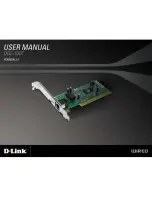
1000BASE-T/100BASE-TX/10BASE-T Physical Layer Compliance Tests Manual
Intel Confidential
1
Introduction
1
Introduction
Networking is complex and involves a combination of advanced analog and digital technologies.
To insure interoperability of networking solutions from various manufacturers, it is imperative that
standard compliance testing is performed.
This document describes procedures for basic 1000BASE-T, 100BASE-TX, and 10BASE-T PHY
compliance testing on Intel-based networking solutions. It does not include the complete set of
tests required for TP-PMD conformance. However, it does include a recommended subset of these
tests. After completing the test procedures described in this manual, the user should be able to
identify and understand how to correct areas where the Unit Under Test (UUT) fails to conform to
the standards listed in
.
The procedures in this document are not intended to be specific to a particular manufacturer’s test
equipment. Moreover, they do not encompass all methods that a test may be performed. The tester
is assumed to have a basic knowledge of oscilloscopes, network analyzers, signal generators, etc.
Advice for success in obtaining accurate measurements are included throughout the document in
shaded boxes.
The test methods described in this document have been customized to test Intel networking silicon
only. Results may vary if these procedures are used on other manufacturers’ networking devices.
1.1
Reference Documents
•
IEEE Standard 802.3-2000,
Supplement to Carrier Sense Multiple Access with Collision
Detection (CSMA/CD) Access Method and Physical Layer Specifications:
— Sections 40.6 - 4.8 for 1000BASE-T
— Section 14.3 for 10BASE-T)
•
ANSI X3.263-1995, section 9 for 100BASE-TX
•
ANSI Standard 802.3-25.4-2002
1.2
Basic Concepts
Recommended equipment settings are provided for each test procedure. These settings provide a
good starting point for measurement. Variations in equipment can effect the resolution and
accuracy of a signal. User experience manipulating equipment trigger and display can also effect
the perception and interpretation of the waveform. In addition, probe polarity and trigger polarity
can effect the interpretation of the signals. The settings provided are based on the test equipment
used and may vary depending on equipment.
1.2.1
Calibration
Due to the precise measurements required for compliance testing, accurate measurement
instruments are required. All equipment used during the testing process must be properly
calibrated. Oscilloscopes must have a signal path compensation and probe calibration completed
prior to testing.












































